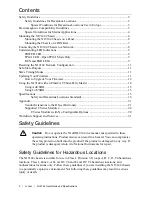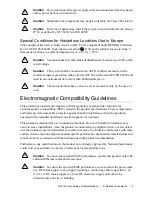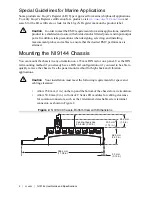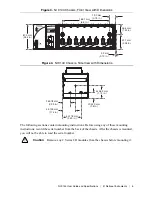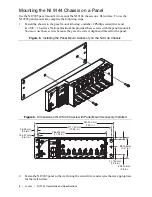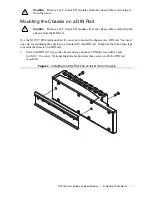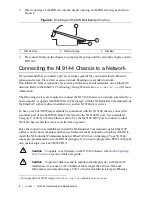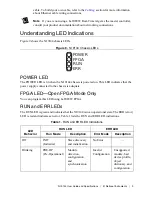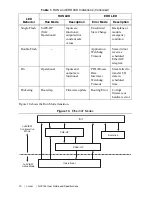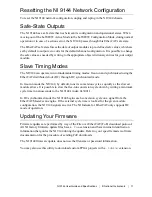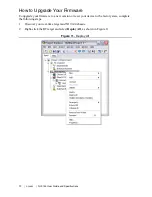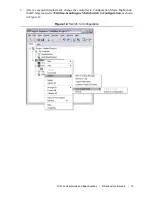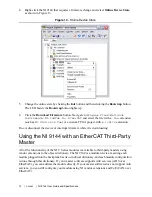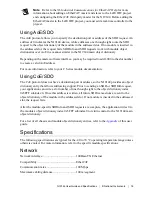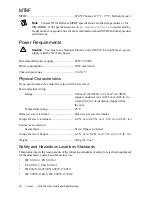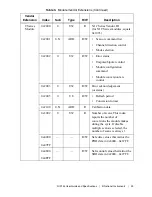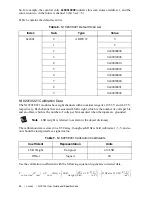
NI 9144 User Guide and Specifications
|
© National Instruments
|
11
Resetting the NI 9144 Network Configuration
To reset the NI 9144 network configuration, unplug and replug in the NI 9144 chassis.
Safe-State Outputs
The NI 9144 has a safe state that lies between its configuration and operational states. When
moving out of the LabVIEW Active Mode to the LabVIEW Configuration Mode, during normal
operation or in case of a serious error, the NI 9144 passes through this EtherCAT safe state.
The EtherCAT safe state forces the data of output modules to pre-defined safe values, which are
set by default to output zero volts for the default channel configuration. It is possible to change
the safe values as needed by writing to the appropriate object dictionary entries for your output
module.
Slave Timing Modes
The NI 9144 can operate in two fundamental timing modes: free-run and synchronized using the
EtherCAT distributed clock (DC) through DC synchronized mode.
In free-run mode the NI 9144, by default, runs its conversion cycle as quickly as the slowest
module allows. It is possible to slow the free-run conversion cycle down by writing a minimum
cycle time in nanoseconds to the NI 9144’s index 0x3001.1.
In DC synchronized mode the NI 9144 begins each conversion cycle on a signal from the
EtherCAT Master/scan engine. If the external cycle time is too fast for the given module
configuration, the NI 9144 signals an error. The NI Indcom for EtherCAT only supports DC
mode of operation.
Updating Your Firmware
Firmware updates are performed by way of the File over EtherCAT (FoE) download protocol.
All NI factory firmware update files have a
.foe
extension and have internal identification
information that guides the NI 9144 during the update. Refer to your specific master software
documentation for the procedure of sending FoE downloads.
The NI 9144 firmware update does not use the filename or password information.
You may also use this utility to download custom FPGA projects with a
.lvbitx
extension.


